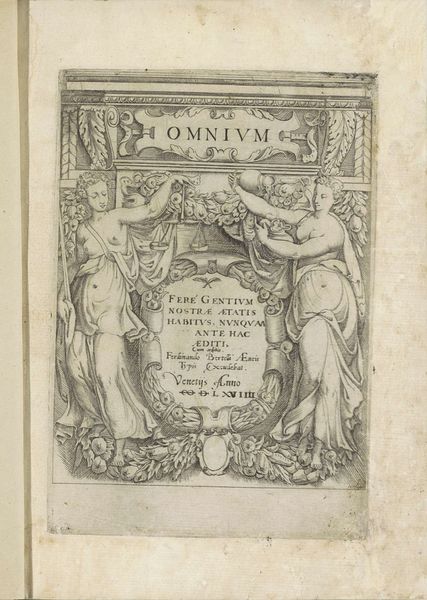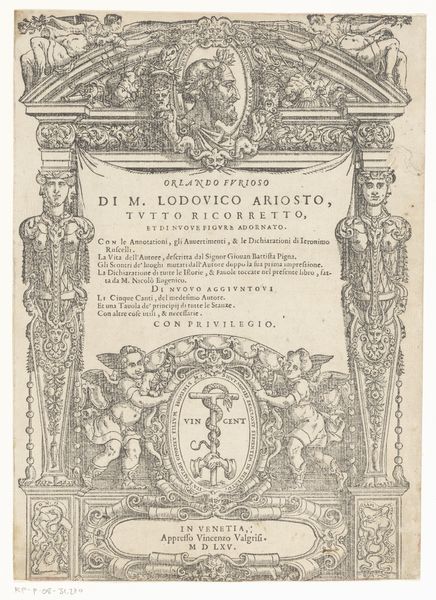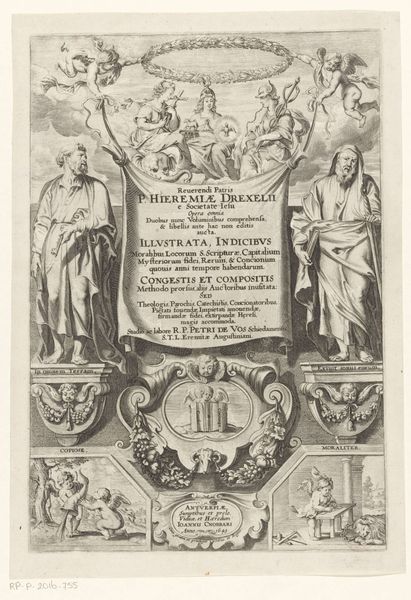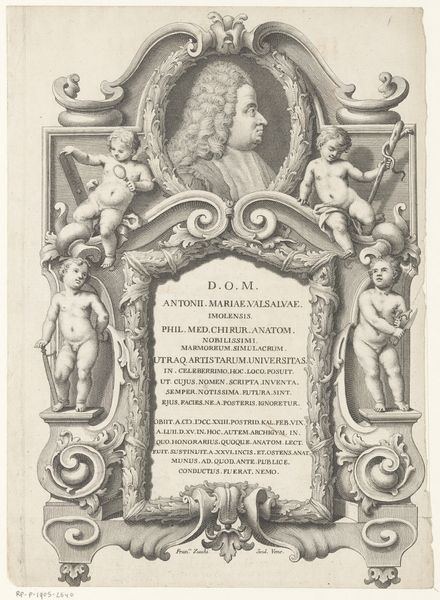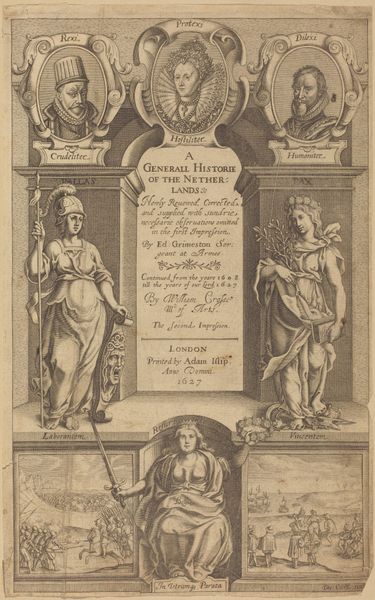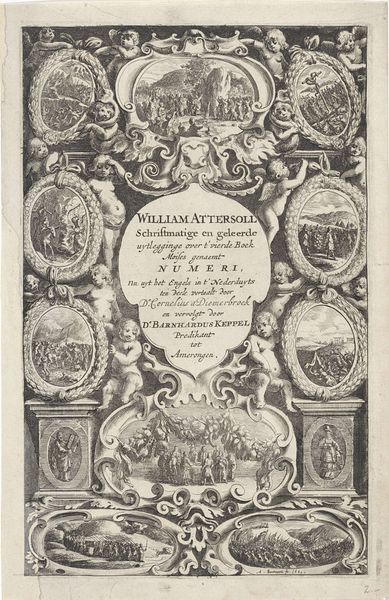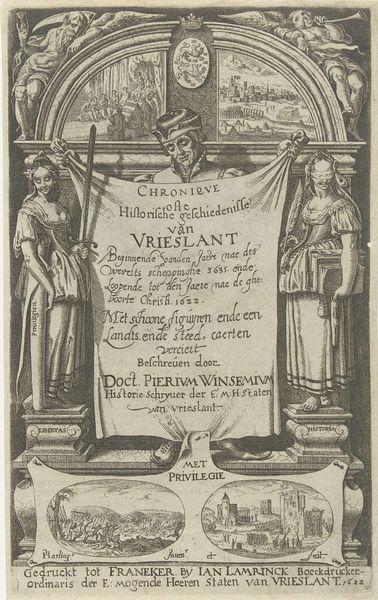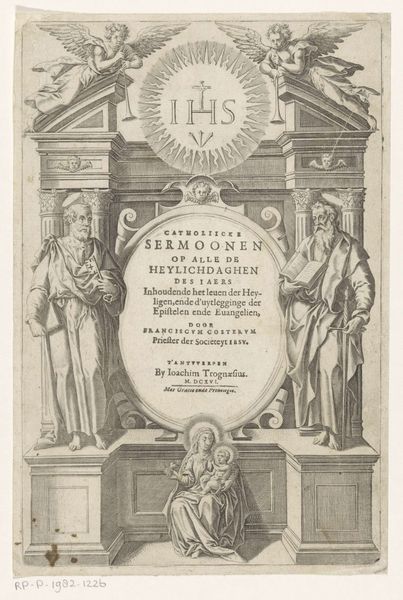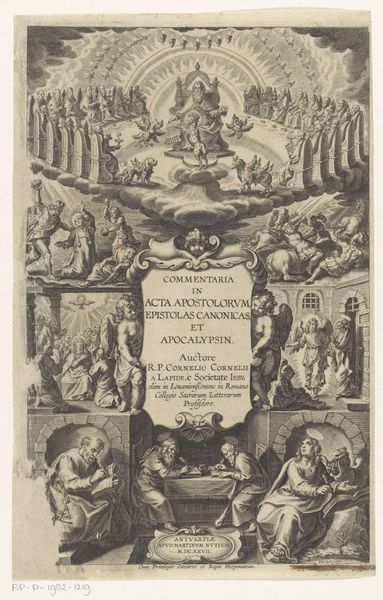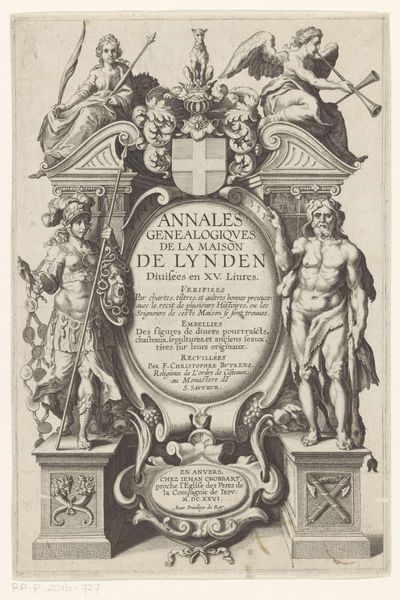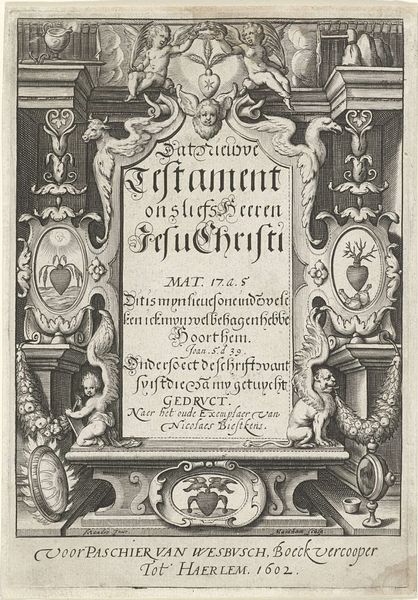
print, intaglio, engraving
#
allegory
# print
#
intaglio
#
11_renaissance
#
history-painting
#
italian-renaissance
#
engraving
Dimensions: height 216 mm, width 159 mm
Copyright: Rijks Museum: Open Domain
Giovanni Maggi made this print, with allegorical figures and putti, in Rome around 1600. It’s a title page, announcing a collection of designs for both antique and modern buildings in Rome. Here, the image itself stakes a claim about Rome’s cultural authority. We see idealized figures drawn from classical antiquity. Putti and allegorical figures flank a central inscription, framing the city as heir to a noble past, reborn in its present. This wasn't just a matter of aesthetics. Architecture was deeply entwined with social and political power in Rome. Produced during a Jubilee year, the print highlights the intertwining of religious authority and urban planning. These kinds of books provided visual resources and promoted certain architectural ideas. Understanding the social context of the time, the political institutions in Rome, and the function of architectural pattern books, helps us understand its cultural significance. By looking at the archives of publishers and artists, we can learn more about the politics of imagery.
Comments
No comments
Be the first to comment and join the conversation on the ultimate creative platform.

